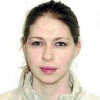Main Menu (Mobile)- Block
- Overview
-
Support Teams
- Overview
- Anatomy and Histology
- Cryo-Electron Microscopy
- Electron Microscopy
- Flow Cytometry
- Gene Targeting and Transgenics
- Immortalized Cell Line Culture
- Integrative Imaging
- Invertebrate Shared Resource
- Janelia Experimental Technology
- Mass Spectrometry
- Media Prep
- Molecular Genomics
- Primary & iPS Cell Culture
- Project Pipeline Support
- Project Technical Resources
- Quantitative Genomics
- Scientific Computing Software
- Scientific Computing Systems
- Viral Tools
- Vivarium
- Open Science
- You + Janelia
- About Us
Main Menu - Block
- Overview
- Anatomy and Histology
- Cryo-Electron Microscopy
- Electron Microscopy
- Flow Cytometry
- Gene Targeting and Transgenics
- Immortalized Cell Line Culture
- Integrative Imaging
- Invertebrate Shared Resource
- Janelia Experimental Technology
- Mass Spectrometry
- Media Prep
- Molecular Genomics
- Primary & iPS Cell Culture
- Project Pipeline Support
- Project Technical Resources
- Quantitative Genomics
- Scientific Computing Software
- Scientific Computing Systems
- Viral Tools
- Vivarium
Abstract
Recent advances in automatic image segmentation and synapse prediction in electron microscopy (EM) datasets of the brain enable more efficient reconstruction of neural connectivity. In these datasets, a single neuron can span thousands of images containing complex tree-like arbors with thousands of synapses. While image segmentation algorithms excel within narrow fields of views, the algorithms sometimes struggle to correctly segment large neurons, which require large context given their size and complexity. Conversely, humans are comparatively good at reasoning with large objects. In this paper, we introduce several semi-automated strategies that combine 3D visualization and machine guidance to accelerate connectome reconstruction. In particular, we introduce a strategy to quickly correct a segmentation through merging and cleaving, or splitting a segment along supervoxel boundaries, with both operations driven by affinity scores in the underlying segmentation. We deploy these algorithms as streamlined workflows in a tool called Neu3 and demonstrate superior performance compared to prior work, thus enabling efficient reconstruction of much larger datasets. The insights into proofreading from our work clarify the trade-offs to consider when tuning the parameters of image segmentation algorithms.
bioRxiv PrePrint https://doi.org/10.1101/2020.01.17.909572








